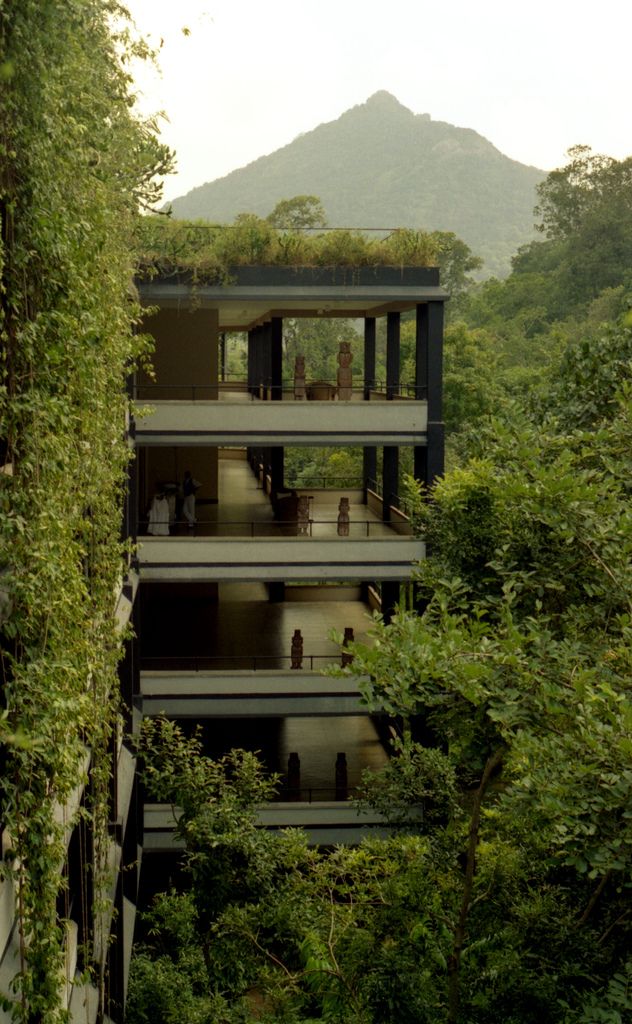Thank you for reminiscing the wonderful work of Geoffrey Bawa. It is of high importance to learn about the vernacular design approach that compliments the site contexts and makes it distinctive from other modern designs. In the interest of creating the blend of modern and traditional design, one can learn much from Geoffrey Bawa’s practices and his ways of the incorporating local traditions and cultural nuisances. It is vital that any design is in accordance with its local climatic conditions, accessibility of materials and resources and adaptable with its environment. And by the analyze of Bawa’s work, the use of vernacular foliage of the tropics, spatial connection between landscape and build space stands prominently in the ways of making the building as a part of holistic natural living element. Vernacular architecture also helps in creating more sustainable and energy-efficient building that helps is using fewer resources and to have minimum effect of the environment. In this age of high modernity with alarming degradation of the environment, Bawa’s work such as Steel Corporation Offices and Housing and Sri Lankan Parliament Complex in Sri Lanka as explained in the blog are exemplary to cultural and economically rich design that are self-sustaining and infused with its natural surroundings.
Vernacular architecture by Geoffrey Bawa
One of the most influential architects in modern Asian architecture is Geoffrey Bawa, a well-known Sri Lankan architect who passed away in 2003. He is well known for employing creative techniques to combine traditional and modern design components. Bawa’s work is defined by his extensive understanding of the local culture, climate, and traditional building methods in order to produce a particular architectural language.
Bawa was inspired to research vernacular architecture by his awareness for context and desire to create structures that fit with their surroundings. He gave a lot of weight to the idea that architecture should complement the local environment and cultural norms in order to create spaces that are tailored to the specific needs and aspirations of their occupants.
Lunuganga Estate
One of Bawa’s well-known works that best represents his method of traditional building is The Lunuganga Estate. This house was Bawa’s private garden retreat in Bentota, Sri Lanka, which he altered over the course of several decades. During the estate’s design, Bawa skillfully incorporated abandoned rubber estate and Dutch colonial mansion with modern architectural elements. A prime illustration of Bawa’s ability to generate a sense of place and his high appreciation for local vernacular traditions are the landscapes and buildings of Lunuganga Estate.
Image 1 : Lunuganga Estate. Captured by me.
Kandalama Hotel
Another notable example is the Kandalama Hotel, located in the Dambulla district of Sri Lanka. Bawa constructed the hotel using local materials and customary techniques in order to merge it into the surrounding natural environment. In order to have as minimal of an environmental impact as possible, the hotel’s terraced design follows the land’s contours, affording panoramic views of the nearby Sigiriya rock fortress and the surrounding forest.
The 1995-built Kandalama Hotel is a prime example of Bawa’s environmental consciousness and the aforementioned coexistence of modernity and tradition. The client had the option of choosing a site close to the base of King Kaspaya’s rock fortress, but the architect persuaded the client to choose an alternative spot some 15 kilometres south on rocky terrain. By avoiding the negative consequences of building, the architect addressed the architectural challenge provided by the site’s extraordinary natural features. Without the aid of any earthmovers, the huge rock formations were maintained, and they had a big impact on the final layout.
Image 2: Kandalama Hotel
Reference : https://www.google.com/url?sa=i&url=https%3A%2F%2Fwww.pinterest.com%2Fpin%2F357895501632267577%2F&psig=AOvVaw2gg2th_2oi033yh8EijgJV&ust=1684455979561000&source=images&cd=vfe&ved=0CBAQjRxqFwoTCLDDgtTN_f4CFQAAAAAdAAAAABAR
Both the Lunuganga Estate and the Kandalama Hotel were examples of how Bawa might adapt traditional architectural elements to create modern, functional buildings that respond to the climatic and cultural setting of Sri Lanka. In order to cope with the tropical heat, his buildings usually combine Sri Lankan architectural elements like sloping roofs, colonnades, and courtyards in addition to open courtyards, covered verandas, and natural ventilation systems.
References :
“Geoffrey Bawa: The Complete Works.” RIBA Books, www.ribabooks.com/geoffrey-bawa-the-complete-works_9780500341872#.
Raci. Geoffrey Bawa – Explore the Best of Sri Lankan Architecture. www.gdcinteriors.com/best-of-sri-lankan-architecture/.
“Geoffrey Bawa Trust.” Geoffreybawa.com, geoffreybawa.com/.



Thank you for reminiscing the wonderful work of Geoffrey Bawa. It is of high importance to learn about the vernacular design approach that compliments the site contexts and makes it distinctive from other modern designs. In the interest of creating the blend of modern and traditional design, one can learn much from Geoffrey Bawa’s practices and his ways of the incorporating local traditions and cultural nuisances. It is vital that any design is in accordance with its local climatic conditions, accessibility of materials and resources and adaptable with its environment. And by the analyze of Bawa’s work, the use of vernacular foliage of the tropics, spatial connection between landscape and build space stands prominently in the ways of making the building as a part of holistic natural living element. Vernacular architecture also helps in creating more sustainable and energy-efficient building that helps is using fewer resources and to have minimum effect of the environment. In this age of high modernity with alarming degradation of the environment, Bawa’s work such as Steel Corporation Offices and Housing and Sri Lankan Parliament Complex in Sri Lanka as explained in the blog are exemplary to cultural and economically rich design that are self-sustaining and infused with its natural surroundings.